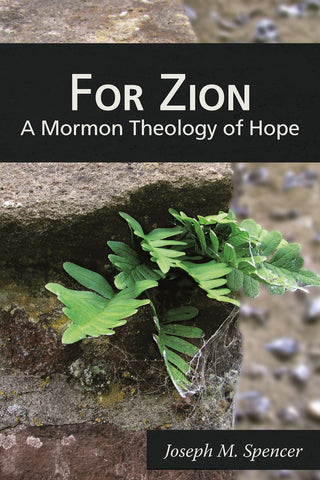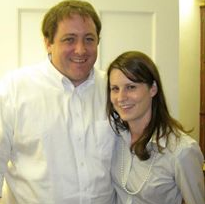News
Twelve Days of Kofford 2017 November 21 2017
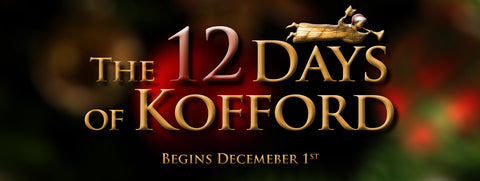
Greg Kofford Books is once again pleased to offer twelve days of discounted holiday shopping from our website!
HERE IS HOW IT WORKS: Every morning from Dec 1th through the 12th, we will be posting a DISCOUNT CODE on our Facebook or Twitter pages. Use this discount code on the corresponding day to receive 30% off select titles. The final day will be an e-book flash sale on Amazon.com.
To help you plan, here are the dates, titles, and sale prices we will be offering beginning Dec 1st. These sales are limited to available inventory. You must follow our Facebook or Twitter pages to get the discount code. Orders over $50 qualify for free shipping. Customers in the Wasatch Front area are welcome to pick orders up directly from our office in Sandy, UT.
Day 1 — Brant Gardner collection
 |
Second Witness, Vol 1: First Nephi $39.95 hardcover |
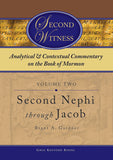 |
Second Witness, Vol 2: Second Nephi through Jacob $39.95 hardcover |
 |
Second Witness, Vol 3: Enos through Mosiah $39.95 hardcover |
 |
Second Witness, Vol 4: Alma $49.95 hardcover |
 |
Second Witness, Vol 5: Helaman through Nephi $39.95 hardcover |
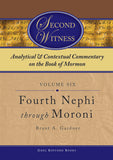 |
Second Witness, Vol 6: Fourth Nephi through Moroni $39.95 hardcover |
 |
The Gift and the Power: Translating the Book of Mormon $34.95 paperback |
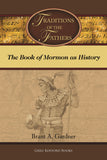 |
Traditions of the Fathers: The Book of Mormon as History $34.95 paperback |
 |
The Garden of Enid: Adventures of a Weird Mormon Girl $22.95 paperback |
 |
The Garden of Enid: Adventures of a Weird Mormon Girl $22.95 paperback |
Day 3 — The Mormon Image in Literature
 |
The Mormoness; Or, The Trials of Mary Maverick: $12.95 paperback |
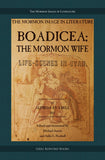 |
Boadicea; the Mormon Wife: Life Scens in Utah $15.95 paperback |
 |
Dime Novel Mormons $22.95 paperback |
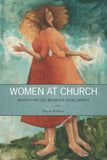 |
Women at Church: Magnifying LDS Women's Local Impact $21.95 paperback |
 |
Mormon Women Have Their Say: Essays from the Claremont Oral History Collection $31.95 paperback |
 |
Voices for Equality: Ordain Women and Resurgent Mormon Feminism $32.95 paperback |
 |
Joseph Smith's Polygamy, Vol 1: History $34.95 paperback |
 |
Joseph Smith's Polygamy, Vol 2: History $34.95 paperback |
 |
Joseph Smith's Polygamy, Vol 3: Theology $25.95 paperback |
 |
Joseph Smith's Polygamy: Toward a Better Understanding $19.95 paperback |
 |
Modern Polygamy and Mormon Fundamentalism: The Generations after the Manifesto $31.95 paperback |
 |
Mormon Polygamous Families: Life in the Principle $24.95 paperback |
 |
Prisoner for Polygamy: The Memoirs and Letters of Rudger Clawson at the Utah Territorial Penitentiary, 1884–87 $29.95 paperback |
 |
Who Are the Children of Lehi? DNA and the Book of Mormon $15.95 paperback |
 |
“Let the Earth Bring Forth”: Evolution and Scripture $15.95 paperback |
 |
Mormonism and Evolution: The Authoritative LDS Statements $15.95 paperback |
 |
Parallels and Convergences: Mormon Thought and Engineering Vision $24.95 paperback |
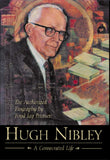 |
Hugh Nibley: A Consecrated Life $32.95 hardcover |
 |
“Swell Suffering”: A Biography of Maurine Whipple $31.95 paperback |
 |
William B. Smith: In the Shadow of a Prophet $39.95 paperback |
 |
LDS Biographical Encyclopedia, 4 Vols $259.95 paperback |
 |
The Man Behind the Discourse: A Biography of King Follett $29.95 paperback |
 |
Liberal Soul: Applying the Gospel of Jesus Christ in Politics $22.95 paperback |
 |
A Different God? Mitt Romney, the Religious Right, and the Mormon Question $24.95 paperback |
 |
Common Ground—Different Opinions: Latter-day Saints and Contemporary Issues $31.95 paperback |
 |
Even Unto Bloodshed: An LDS Perspective on War $29.95 paperback |
 |
War & Peace in Our Time: Mormon Perspectives $29.95 paperback |
 |
The End of the World, Plan B: A Guide for the Future $13.95 paperback |
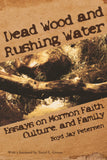 |
Dead Wood and Rushing Water: Essays on Mormon Faith, Culture, and Family $22.95 paperback |
 |
Mr. Mustard Plaster and Other Mormon Essays $20.95 paperback |
 |
Writing Ourselves: Essays on Creativity, Craft, and Mormonism $18.95 paperback |
 |
On the Road with Joseph Smith: An Author's Diary $14.95 paperback |
 |
Hearken O Ye People: The Historical Setting of Joseph Smith's Ohio Revelations $34.95 hardcover |
 |
Fire and Sword: A History of the Latter-day Saints in Northern Missouri, 1836–39 $36.95 hardcover |
 |
A House for the Most High: The Story of the Original Nauvoo Temple $29.95 paperback |
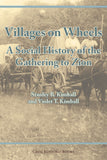 |
Villages on Wheels: A Social History of the Gathering to Zion $24.95 paperback |
 |
Mormonism in Transition: A History of the Latter-day Saints, 1890–1930, 3rd ed. $31.95 paperback |
Day 11 — International Mormonism
 |
Tiki and Temple: The Mormon Mission in New Zealans, 1854–1958 $29.95 paperback |
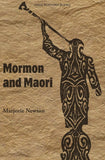 |
Mormon and Maori $24.95 paperback |
 |
The Trek East: Mormonism Meets Japan, 1901–1968 $39.95 paperback |
 |
From Above and Below: The Mormon Embrace of Revolution, 1840–1940 $34.95 paperback |
 |
The History of the Mormons in Argentina $24.95 paperback |
 |
For the Cause of Righteousness: A Global History of Blacks and Mormonism, 1830–2013 $32.95 paperback |
Q&A with Michael Austin and Ardis E. Parshall for Dime Novel Mormons March 13 2017
Order Your Copy Today
Q: For those who are not familiar with the Mormon Image in Literature series, can you explain its purpose and scope?
Mike: The Mormon Image in Literature series is a collaboration between an archival researcher and a literary critic that seeks to reprint the books that shaped the public perceptions of Mormonism in the nineteenth and early twentieth centuries. We will include books by Mormons and books about Mormons, but will focus on works that are hard to find and virtually unknown in the twenty-first century (as opposed to books like A Study in Scarlet and Riders of the Purple Sage, which have been continuously in print since their first publication). Along with faithful reproductions of the texts that scholars can use as primary research texts, each of these volumes contains an introduction and notes that set the works, and their authors, in a context that relates both to the way Mormons were understood by the author and the way the publishing industry in the United States was changing and demanding different kinds of works.
Ardis: These novels have next to nothing to teach me about Mormon history directly—they're too wildly inaccurate to be data sources. What they do give me is a chance to enter the Mormon past, in a sense. I read the words, knowing that readers of a hundred or more years ago read the same words. This is what people thought of us. If I were a missionary, this is what would be in the minds of people behind the doors I knocked on and in the minds of listeners at street meetings. If I were a Mormon mother sending my boy out as a missionary, this is what he would have to face, this is why I might be afraid for him, this is why I would be proud of him. This is what is behind the sneer on the conductor's face when he takes my ticket; this is what brings a curl to the lip of the government employee I appeal to for assistance. I know how I feel and what I think when I read news accounts today, or watch current TV, with caricatures of my behaviors and beliefs; when I read a sensational novel like those in our series, I know what it meant and felt like to a Mormon of the era to read these. We can dress up like pioneers and we can put on pageants about episodes in Mormon history—but that is superficial playacting. Watching the stories of these novels playing out in my imagination, just as they played out in the imaginations of their original readers, seems to me to be much closer to replicating historical reality.
Q: If you ran a bookstore, what section do you think these books would fit best in?
Ardis: Fiction, or historical fiction. I would keep the series together, rather than breaking it up by genre. (The genre mix will be more and more evident as the series continues.)
Mike: I would put them in the fiction section. Or in the Mormon Studies section if I owned one of the handful of bookstores in the world with a Mormon Studies section. And, like Ardis, I would keep the series together.
Q: Granted that the four titles collected in Dime Novel Mormons are not considered “highbrow” literature, can you give me a passage or scene that stood out to you in illustrating how public perception of Mormons may have been influenced by popular media tropes?
Ardis: When the villain Mercer Aldrich/John Leigh is introduced in Dolores, the Danite's Daughter, he is portrayed as handsome and intelligent and well-mannered and well-dressed—everything a woman might want, seemingly. But, of course, his civilized exterior is a mask hiding what he really is: a Mormon! a Danite! a threat! The fact that he can present himself so attractively only underscores the danger by warning readers that they cannot trust their judgment where a Mormon is concerned. That is a trope repeated in many of these novels, whenever a Mormon agent or missionary is among civilized society in the East or in England—it is only when he is among his own evil kind that the character's true nature shows itself.
A flesh-and-blood Mormon missionary who was kind and articulate had two strikes against him when the people he approached had that stock Mormon villain in mind. The more polite an elder was, the more effort he put into personal cleanliness, the more cheerful he was, the more carefully he presented his gospel message, the more at a disadvantage he could be: Isn't he just like the novels portray Mormons? Why, the nicer he is, the more rotten his heart must be, and the more clever he is at concealing his evil intent! There really isn't much a man can do to dispel the expectations of a public primed to expect the worst exactly when he is on his best behavior. In some cases, novelists who are most familiar with the Mormon message have also worked bits of standard missionary presentations into their stories, so that when an elder taught a bit of doctrine, it must have set off alarm bells in the minds of readers—here is a Mormon who not only acts the way these novels have depicted Mormons, he's actually saying what they warned me he would say! He must be just as bad as they say, too!
Mike: In the beginning of The Bradys Among the Mormons, Old King Brady, the nation's most accomplished private detective, is summoned to Washington, DC, to meet with a senator. Utah has become a state, and a candidate for its congressional seat has proposed to the senator's daughter. The senator will allow the marriage, but only if the Mormon, Joseph Smith Podmore, proves to be single and not secretly practicing polygamy.
This book came out right at the start of the Reed Smoot hearings, so it refers to a major public concern of the time. But it also shows a popular dime novel publisher trying to get as much life as possible out of the Mormon stereotypes that had existed for about thirty-five years in this kind of fiction. Brady will travel to Utah and discover a beautiful and modern Salt Lake City, but beneath that city, in a series of tunnels and caverns accessible only to Mormon elders, things go on just as they always have: polygamy, Danites, blood atonement, and all the rest.
I think that the new generation of dime novels that came out at the turn of the twentieth century created modern frames for the previous century's sensational stereotypes of Mormons, which had a lot to do with the perpetuation of those stereotypes and the assumption of many Americans that nothing really changed after the Manifesto.
Q: Was there anything in this collection of stories that surprised you in its depiction of Mormons, whether positive or negative? Anything that did not follow the standard villain tropes of secrecy, sexual deviancy, and violence?
Mike: In Frank Merriwell Among the Mormons, the author takes care to depict the standard Mormon villain—an aging patriarch trying to force a beautiful young maiden to marry him—as a member of a breakaway group of Mormons who are defying the Church. One of the heroes of the story is a young, monogamous, mainstream Mormon who wants to marry the beautiful young maiden in question. Frank Merriwell points out that the rising generation of Mormons are good citizens who are opposed to polygamy. In 1897, in a dime novel, this amounts to something like high praise.
Ardis: Hmm. This one is harder. Nothing comes to mind as surprising in the depiction of Mormons—the maidens are all fair and helpless; the Mormon villains are uniformly despicable; the Gentile heroes are unfailingly perfect specimens of stalwart American manhood.
One element that I hadn't been aware was so prevalent in these books is that the Mormon landscape is shown to be as malevolent as the Mormon soul. There is that vast underground network of dimly-lit caverns beneath Salt Lake City, all interconnected by natural tunnels, their walls sometimes dripping with lake water, their dead-ends dropping off suddenly into bottomless pits, their acoustics so perfect that our heroes can eavesdrop on secret Danite conversations without their own voices or footsteps betraying their presence to those Danites. The natural twists and turns in those tunnels and caverns somehow magically line up with the geometric regularity of the surface, so that the house of every prominent Mormon, built on Salt Lake's straight streets and right-angled blocks, has easy access to the subterranean world. Even the mountain hideouts have magical qualities. Danites, and eventually our heroes, can pass into and out of valleys by means of caves and secret passages.
I understand that readers of dime novels were probably not familiar with the legitimate writings of naturalists and army surveyors and the great Western explorers who report no trace of such geographic features, but it's still a bit surprising to me that readers of these stories could suspend their disbelief in such weird and abnormal landscapes in order to enter into the story. So, you have no faith in the basic humanity of tens of thousands of Mormons? Okay, but how does that translate into your lack of faith in the integrity of the natural world? That, in some ways, surprises me.
Q: This has already been addressed in passing, but I’d like to make it an explicit focus: How would you address readers who may be concerned that the books collected in this volume are often stigmatized as being “anti-Mormon” literature?
Mike: Oh, there is no question that these are anti-Mormons books—much more so than anything being produced today. But these portrayals are not unrelated to depictions of Mormons in some kinds of contemporary literature—the modern mystery novel, for example, where there are still Danites and blood atonement in some places. It is important for Latter-day Saints to understand the history of how we have been portrayed because that history has had consequences that we are still living with. It is always worth our time to learn the history of ideas and perceptions that are still with us today.
Ardis: They are anti-Mormon books—they falsify Mormon doctrine and character and intent; they shaped and promoted anti-Mormon feeling that extended from the novels into the real world and persists to the present. The question for me is, “Granted that these are anti-Mormon books, is there any good purpose in reprinting them, in reading them?” And I would answer that with a shouted “Yes!”
You won't learn anything about Mormonism here, but you will learn—in a sometimes delightful way, if you can turn off the natural tendency to take offense—quite a bit about the world that Mormons lived in or confronted whenever they looked outside Mormondom. You'll better understand where these warped views come from when you hear them repeated in some form today.
And I wouldn't hesitate to recommend that anybody, young or old, Mormon or not, read these stories, recognizing them for what they are. I agree with something Boyd K. Packer said in 1976 in a fireside address about the arts: “Teachers [readers in this case] would do well to learn the difference between studying some things, as compared to studying about them. There is a great difference.” Readers aren't reading anti-Mormonism in these novels to adopt that view themselves; they're reading about it, to understand and face it.
Q: Can you give us a glimpse as to what is yet in store for the Mormon Image in Literature series?
Mike: The next few volumes will focus on some of the literature produced by Mormons in the nineteenth century. We are working on a critical edition of Orson F. Whitney's Elias, for example, and on the collected works of Josephine Spencer, which have never been published before.
Ardis: I'm especially excited for two books written by Mormon women, which are as different as can be from the dime novels. The first is one or more volumes of the collected short stories of Josephine Spencer who saw well beyond her own time, and the other is the novel Venna Hastings by Julia Farr (the pseudonym of a woman I had been chasing through history before realizing she was a novelist). Both of these present a Mormon image that is positive, generally not preachy, and which Mormons at the turn of the twentieth century could read with interest—and maybe a sigh of relief that for once they could see themselves, not caricatures, on the printed page.
Along with these, you can look forward to mysteries, love stories, comedies, an outrageous depiction of missionaries that sparked a national investigation, high-minded or well-intentioned religious prose—just about every genre imaginable, except perhaps science fiction.
Order Your Copy Today
Q&A with Scott Hales for The Garden of Enid, Part 2 February 02 2017
Pre-Order Your Copy Today
What are some of the themes that pop up in part 2?
As I was writing The Garden of Enid, I was interested in unpacking ideas about faith, history, human connection, and truth. Part two is especially interested in truth—one of the slipperiest words in language and Mormonism. For much of the book, Enid is trying to anchor herself to some kind of monolithic notion of truth. She wants to finds something stable in the universe, but she finds that the closer she thinks she gets to monolithic truth, the less monolithic it appears.
I think her journey encourages readers to reflect on the value of truth and how they want it to function in their own lives.
Cameos played a big role in part 1. Who are some of the cameos that we can expect in part 2?
Joseph Smith continues to make cameos in part two, as do Eliza R. Snow, Evan Stephens, and the Book of Abraham mummy. Enid also talks with people like Jane Austen, Karl Maeser, Doctor Philastus Hurlbut, Charles Anthon, George A. Smith, and Juanita Brooks. The lost 116 pages and Joanna Brooks’ Book of Mormon Girl also make appearances.
Some of my favorite cameos in part two involve fictional or mythological figures from pop culture. Enid talks with Matt and Mandy from The Friend magazine, Big Foot, and Charlie Brown.
The most significant cameo in the book, however, is the late Mormon scholar Eugene England, who dresses like the Angel Moroni and acts like Virgil in Dante’s Divine Comedy. Unlike other cameo characters, who always show up in simple four-panel comics, Eugene takes Enid on a five-page odyssey through space and time, belief and doubt.
How does her relationship with her mother develop in part 2?
The relationship becomes much rockier in part two. Enid looks to her mother’s past for answers about her own identity, but she often goes about it the wrong way. She and her mother have a traumatic falling out, and much of the book is about what happens after their relationship hits the fan. In both books, Enid struggles to see her mother as a real person, which causes her to say and do hurtful things to her mother. In part two, things go from bad to worse, but they also get better in unforeseen ways.
What do you think Enid learns about herself in part 2?
At the end of part one, Enid begins to see herself as someone who is capable of having meaningful relationships with other people. In part two, she learns that cultivating such relationships makes her vulnerable to the raw emotions that define human experience. This make her a much more awkward and vulnerable character than the weird Mormon girl we saw in part one, but it also makes her more endearing and relatable. Her heart gets much bigger in part two.
What are some of the challenges you have felt in writing this story?
Writing Enid’s story rarely felt like a challenge. Perhaps my biggest challenge was never letting my natural reserve get in the way of her audacity. Enid and I share many of the same interests, but we have different temperaments. Maybe that’s why I found her story so easy to write.
Of course, many of the comics touch on controversies within Mormonism, and addressing them with sensitivity was sometimes a challenge. Some satirists like to aggravate wounds, but my satire is meant to sting like antiseptic.
What do you hope readers will take away from Enid’s life?
I hope people will read Enid and decide to stop being sucky to each other. In other words, I hope Enid’s life brings about world peace and better music on the radio.
I also hope people will read Enid and be inspired to tell stories of their own. Mormonism is an inexhaustible landscape for creative people. I hope better writers and artists than me will read Enid and want to draw on their own experiences with Mormonism to tell stories that enrich our understanding of and appreciation for the Mormon landscape.
Will there be a part 3? There has to be a part 3. I mean, there really, really has to be a part 3.
Part three is always a possibility. I have an idea for a comic about Enid’s last summer before she goes to college. The Garden of Enid has always unfolded in real time, however, and I don’t know if I have the time this summer to do that with this story. I’ll probably start drawing it anyway to see where it goes. If I end up showing Enid as a freshman in college, so be it. I’m sure it will be awkward.
But I don’t plan to start a part three until I finish my current serial comic, Chronicles of Wyler, which is a kind of spin-off prequel to The Garden of Enid. Readers of The Garden of Enid: Adventures of a Weird Girl, Part One know Wyler from Enid’s EFY experience. Chronicles of Wyler tells the story, more or less, of how Wyler got to EFY. I’m almost finished with it, but one Wyler comic takes about three times longer to draw than an Enid comic—and I have much less time to devote to it than I had when I was drawing Enid comics all the time.
Chronicles of Wyler is a different reading experience than The Garden of Enid, and has a much smaller fan base, but I think readers who like Enid will like Wyler’s story as well.
Pre-Order Your Copy Today
On the twelfth day of Kofford: $1.99 flash sale on Kindle e-books! December 12 2016

On the twelfth day of Kofford, fill your digital stockings with our HUGE e-book promotion. Today only, each of the following titles are only $1.99 on Kindle! PLUS, to help you prepare for the upcoming D&C year in Gospel Doctrine class, we are offering B. H. Robert's classic six-volume A Comprehensive History of the Church on Kindle for only $3.99!
This flash sale ends at midnight tonight (Dec. 12th)
On the eleventh day of Kofford: 30% off Mormon Image in Literature titles! December 11 2016
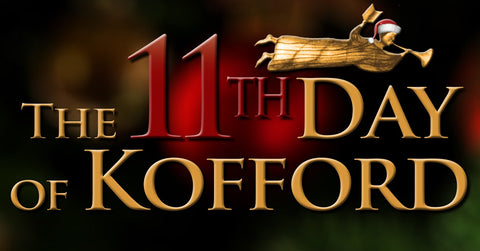
Mormon Image in Literature titles are 30% off December 11th. These special prices are only available for one day, so don't wait!
Orders over $50 qualify for free shipping. Also, local Utah customers can opt to pick up their order directly from our office in Sandy (select this option under the shipping menu).
For more information about the Twelve Days of Kofford holiday sales, click here.
 |
The Mormoness; Or, The Trials Of Mary Maverick: A Narrative Of Real Events Retail: $12.95 |
 |
Boadicea; the Mormon Wife: Life Scenes in Utah Retail: $15.95 |
On the ninth day of Kofford: 30% off biography titles! December 09 2016

Biography titles are 30% off December 9th. These special prices are only available for one day, so don't wait!
Orders over $50 qualify for free shipping. Also, local Utah customers can opt to pick up their order directly from our office in Sandy (select this option under the shipping menu).
For more information about the Twelve Days of Kofford holiday sales, click here.
 |
Hugh Nibley: A Consecrated Life Retail: $32.95 Best Biography Award, Mormon History Association |
 |
“Swell Suffering”: A Biography of Maurine Whipple Retail: $31.95 Best Biography Award, Mormon History Association |
 |
William B. Smith: In the Shadow of a Prophet Retail: $39.95 Best Biography Award, John Whitmer Historical Association |
 |
The Man Behind the Discourse: A Biography of King Follett Retail: $29.95 |
Twelve Days of Kofford Christmas Sale 2016 November 30 2016

MERRY CHRISTMAS FROM GREG KOFFORD BOOKS
Greg Kofford Books is pleased to announce our annual holiday sale on select popular titles beginning December 1st – December 12th.
Here's how it works: at the stroke of midnight each day, a new blog post will go live on our website listing that day's special offerings along with a discount code that you can enter at check-out to get the holiday price. It's that simple. We will also be posting the daily offering and discount code on our Facebook page at 7am.
*Orders over $50 qualify for free shipping (continental U.S. customers only). Local Utah customers can stop by our office in Sandy to pick up their orders as well. Holiday inventory on some titles may be limited, so be sure to take advantage of the daily sale early.*
To help you plan in advance, here are our scheduled sales:
Day 1 — Brant Gardner titles
 |
Second Witness: Analytical & Contextual Commentary on the Book of Mormon series
|
 |
The Gift and Power: Translating the Book of Mormon |
 |
Traditions of the Fathers: The Book of Mormon as History Best Religious Non-fiction Award, Association for Mormon Letters |
Day 2 — Adam Miller titles (essays in Mormon theology)
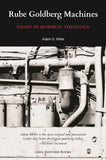 |
Rube Goldberg Machines: Essays in Mormon Theology Retail $18.95 |
 |
Future Mormon: Essays in Mormon Theology Retail: $18.95 |
Day 3 — Personal Essays
 |
Dead Wood and Rushing Water: Essays on Mormon Faith, Culture, and Family Retail: $22.95 |
 |
Mr. Mustard Plaster and Other Mormon Essays by Mary Lithgoe Bradford Retail: $20.95 Sale price: $14.67 |
 |
Writing Ourselves: Essays on Creativity, Craft, and Mormonism Retail: $18.95 |
Day 4 — Blake T. Ostler titles
 |
Exploring Mormon Thought series by Blake T. Ostler 30% off each title |
 |
Fire on the Horizon: A Meditation on the Endowment and Love of Atonement Retail: $17.95 |
Day 5 — Contemporary Studies in Scripture
 |
Authoring the Old Testament: Genesis — Deuteronomy Retail: $26.95 |
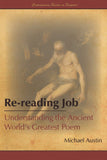 |
Re-reading Job: Understanding the Ancient World's Greatest Poem Retail: $20.95 |
 |
Search, Ponder, and Pray: A Guide to the Gospels Retail: $27.95 |
 |
Beholding the Tree of Life: A Rabbinic Approach to the Book of Mormon Retail: $21.95 |
 |
The Vision of All: Twenty-five Lectures on Isaiah in Nephi's Record Retail: $25.95 |
Day 6 — International Mormonism
 |
The Trek East: Mormonism Meets Japan, 1901–1968 Retail: $39.95 |
 |
Mormon and Maori Retail: $24.95 Best International Book Award, Mormon History Association |
 |
Tiki and Temple: The Mormon Mission in New Zealand, 1854–1958 Retail: $29.95 Best International Book Award, Mormon History Association |
 |
For the Cause of Righteousness: A Global History of Blacks and Mormonism, 1830–2013 Retail: $32.95 Best Book Award, Mormon History Association |
 |
The History of the Mormons in Argentina Retail: $24.95 |
 |
From Above and Below: The Mormon Embrace of Revolution, 1840 – 1940 Retail: $34.95 Best International Book Award, Mormon History Association |
Day 7 — Polygamy titles
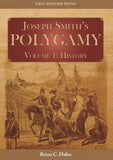 |
Joseph Smith's Polygamy: History and Theology Now in paperback! 30% off each title |
 |
Joseph Smith's Polygamy: Toward a Better Understanding Retail: $19.95 |
 |
Modern Polygamy and Mormon Fundamentalism: The Generations after the Manifesto Retail: $31.95 Best Book Award, John Whitmer Historical Association |
 |
Mormon Polygamous Families: Life in the Principle Retail: $24.95 |
 |
Prisoner for Polygamy: The Memoirs and Letters of Rudger Clawson at the Utah Territorial Penitentiary, 1884–87 Retail: $29.95 |
Day 8 — Contemporary Issues
 |
Women at Church: Magnifying LDS Women's Local Impact Retail: $21.95 |
 |
Common Ground—Different Opinions: Latter-day Saints and Contemporary Issues Retail: $31.95 |
 |
The Liberal Soul: Applying the Gospel of Jesus Christ in Politics Retail: $22.95 |
 |
Voices for Equality: Ordain Women and Resurgent Mormon Feminism Retail: $32.95 |
Day 9 — Biography
 |
Hugh Nibley: A Consecrated Life Retail: $32.95 Best Biography Award, Mormon History Association |
 |
“Swell Suffering”: A Biography of Maurine Whipple Retail: $31.95 Best Biography Award, Mormon History Association |
 |
William B. Smith: In the Shadow of a Prophet Retail: $39.95 Best Biography Award, John Whitmer Historical Association |
 |
The Man Behind the Discourse: A Biography of King Follett Retail: $29.95 |
Day 10 — War and Peace
 |
War & Peace in Our Time: Mormon Perspectives Retail: $29.95 |
 |
Even unto Bloodshed: An LDS Perspective on War Retail: $29.95 |
 |
The End of the World, Plan B: A Guide for the Future Retail: $13.95 |
 |
Saints of Valor: Mormon Medal of Honor Recipients, Updated 2nd Edition Retail: $31.95 |
Day 11 — Mormon Image in Literature
 |
The Mormoness; Or, The Trials Of Mary Maverick: A Narrative Of Real Events Retail: $12.95 |
 |
Boadicea; the Mormon Wife: Life Scenes in Utah Retail: $15.95 |
Day 12 — Ebook Flash Sale — $1.99 for select titles
To be announced. Stay tuned!
New from The Mormon Image in Literature Series: Boadicea — now available! July 14 2016

NOW AVAILABLE from The Mormon Image in Literature series:
Boadicia; The Mormon Wife: Life-Scenes in Utah
by Alfreda Eva Bell
Edited and annottated by Michael Austin and Ardis E. Parshall
About the series:
The Mormon Image in Literature reprints important literary works by and about Mormons—from the sensational anti-polygamy books and dime novels of the Civil War era to the first attempts of Mormon writers to craft a regional literature in their Great Basin kingdom. Each volume contains a critical introduction, helpful annotations, and multiple appendices that enlighten and enliven the text. These volumes have been designed for both Mormon and non-Mormon readers who want to understand the cultural importance of Mormonism during the first Latter-day Saint century.
From series co-editer, Michael Austin:
“Much of this work will be just as interesting to historians as to scholars of literature. In fact, some of the work with the least literary merit has the greatest historical interest. Boadicea: The Mormon Wife, which will be the second volume in the series, will probably never be accused of literary greatness. But it has been written about by some of the top figures in Mormon History: Leonard Arrington, Terryl Givens, Sarah Barringer Gordon, Paul W. Reeve.
The literature of the 19th century had very little subtlety when it came to portraying Mormons. The overwhelming majority of volumes featured Mormon elders living in harems and forming Danite bands to hunt down and kill dissenters. And this was not just in the tawdry literature. Both Robert Louis Stevenson and Arthur Conan Doyle wrote novels that portrayed Mormons in these ways.”
Read the complete Q&A here.

Boadicea; the Mormon Wife: Life-Scenes in Utah
Part of The Mormon Image in Literature series
by Alfreda Eva Bell
Edited by Michael Austin and Ardis E. Parshall
151 Pages
ISBN 978-1-58958-566-9
$15.95 (paperback)
Also available in ebook
First published in 1855, Boadicea; the Mormon Wife belongs to a sub-genre of crime fiction that flourished in the Eastern United States during the 1850s. Boadicea has become increasingly important to scholars of Mormonism because it gives us a glimpse of the Mormon image in literature immediately after the Church’s public acknowledgement of plural marriage. Over the next half century, this image would be sharpened and refined by writers with different rhetorical goals: to end polygamy, to attack Mormon theology, or just to tell a highly entertaining adventure story. In Boadicea, though, we see these tropes in their infancy, through a prolific author working at break-neck speed to imagine the lives of a strange people for readers willing to pay the “extremely low price of 15 cents” for the privilege of being amazed by stories of polygyny and polyandry, along with generous helpings of adultery, seduction, kidnapping, and no fewer than fourteen untimely but spectacular deaths: people are shot, stabbed, bludgeoned, poisoned, hanged, strangled, and drowned. No other novel of the nineteenth century comes anywhere near Boadicea in portraying Mormon society as violent, chaotic, and dysfunctional.
Preview Boadicea
About the series editors:
Michael Austin is the author or editor of seven books and more than 50 articles, book chapters, and reviews, including Re-reading Job: Understanding the Ancient World’s Greatest Poem. He is currently the Provost and Vice President of Academic Affairs at Newman University in Wichita, Kansas.
Ardis E. Parshall is a historian, freelance researcher specializing in Mormon history, and author. She co-edited with Paul Reeve Mormonism: A Historical Encyclopedia and is currently writing She Shall Be an Ensign, a history of the LDS Church told through the lives of Mormon women. She blogs at Keepapitchinin.
Year in Review and the Year Ahead December 29 2015
2015 was another amazing year for Greg Kofford Books! Here is a recap of the year and a look ahead to what is coming in 2016 and beyond.
Award-winning Publications
Several Kofford titles won awards from the Mormon History Association and the Association for Mormon Letters in 2015:
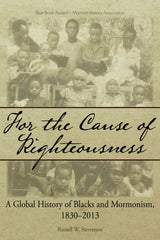 |
MHA Best Book Award For the Cause of Righteousness: A Global History of Blacks and Mormonism, 1830-2013 “Invaluable as a historical resource.” — Terryl L. Givens, author of Parley P. |
 |
MHA Best International Book Award Mormon and Maori “Unflinchingly honest yet unfailingly compassionate.” — Grant Underwood, |
 |
AML Religious Non-Fiction Award Re-reading Job: Understanding the Ancient World's Greatest Poem “A new gold standard for Mormon writings.” — Julie M. Smith, author, Search, |
All 2015 Titles
Here are all of the great titles that Greg Kofford Books published this past year:
 |
Mr. Mustard Plaster and Other Mormon Essays “Vibrant portraits of a kind and loving soul.” — Boyd J. Peterson, author of |
 |
Perspectives on Mormon Theology: Scriptural Theology Each essay takes up the relatively un-self-conscious work of reading a |
 |
Joseph Smith's Polygamy: Toward a Better Understanding “It is a book that will be read and discussed for years to come.” — Robert L. |
 |
Even Unto Bloodshed: An LDS Perspective on War “Indispensable for all future Mormon discussions of the subject.” — Daniel C. |
 |
William B. Smith: In the Shadow of a Prophet “Walker’s biography will become essential reading.” — Mark Staker, author of |
 |
Voices for Equality: Ordain Women and Resurgent Mormon Feminism “Timely, incisive, important.” — Joanna Brooks, co-editor of Mormon |
 |
Traditions of the Fathers: The Book of Mormon as History “Illuminating, prismatic views of the Book of Mormon.” — Mark Alan Wright, |
Looking Ahead at 2016 and Beyond
Here are a few eagerly-anticipated titles currently scheduled for the first part of 2016 and a look at what is in the works for the future:
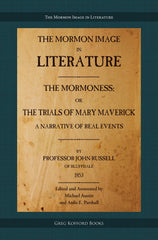 |
The Mormon Image in Literature Series The Mormoness; Or, The Trials Of Mary Maverick: A Narrative Of Real Events Published in 1853, the first American novel about the Mormons is also one of |
 |
The End of the World, Plan B: A Guide for the Future Environmental decline, political gridlock, war and rumors of war, decadence, |
Also forthcoming...
More volumes are in the works for our The Mormon Image in Literature, Contemporary Studies in Scripture, and Perspectives on Mormon Theology series.
Saints, Slaves, and Blacks by Newell G. Bringhurst, revised and updated
Lot Smith: Utah Hero, Arizona Colonizer by Carmen Smith and Talana Hooper
The Trek East: Mormonism Meets Japan, 1901-1968 by Shinji Takagi
Science the Key to Theology by Steven L. Peck
And much, much more...
Thank you for making 2015 exceptional and we are excited about 2016!
20% Off Sale on Women's Issues Books October 27 2015

With the recently published essays approved by the LDS Church on the topics of women and priesthood and the doctrine of Heavenly Mother, now would be a great time to read up on the conversations surrounding women in Mormonism.
Greg Kofford Books is pleased to offer 20% off the following titles beginning today through November 3rd when you type "ESSAYS" in the discount code box at checkout.
Mormon Women Have Their Say
Edited by Claudia L. Bushman and Caroline Kline
Sale Price: $25.56 + tax, paperback
(enter the word "ESSAYS" in the discount box at checkout)
From Claudia Bushman: Throughout the tangled past of the Church of Jesus Christ of Latter-day Saints, women have been active and vocal participants. Their journals and diaries, primarily from the nineteenth century, have been plumbed for evidence of their experience and attitudes. Less is known and written about contemporary Mormon women. LDS women today still live in a patriarchal society. What is it like for them? How to they respond to the Church they have joined or inherited? Can they make space for their interests? How do they envision their contemporary role in the Church? What are the issues that define their lives? Writing our own stories empower us. Many of these narrators do not normally speak out. This project preserves and perpetuates their voices and memories. The silent majority goes on record.
In light of the Gospel Topic essay "Mother in Heaven," readers would find the chapter, "Heavenly Mother," interesting as it explores the views and feelings of contemporary LDS women on this important theological topic.
Praise for Mormon Women Have Their Say:
“Mormon women have always had a lot to say, but generation after generation, their voices fade away. The problem is not just that archives and manuals favor the writings of male leaders. The real problem is that few of us know how to listen to seemingly common stories. We revere our sisters but don’t understand them. The essays in this volume go beyond collecting and preserving to the hard work of interpretation.” — Laurel Thatcher Ulrich, author of Well-Behaved Women Seldom Make History
Women at Church: Magnifying LDS Women's Local Impact
By Neylan McBaine
Sale Price: $17.56 + tax, paperback
(enter the word "ESSAYS" in the discount box at checkout)
From Neylan McBaine: This book is predicated on a single belief: that there is much more we can do to see, hear, and include women at church. In an effort to increase awareness of that belief and move all Church members to act on it, I have written this book as an inducement toward greater empathy for those who feel unseen, unheard, and unused, and a strategic guide to improving our gender cooperation in local Church governance. This book is for men and women who either are themselves engaged in this wrestle or know someone who is. It is for women who have been sitting on the sidelines of the media conversation around Mormon women, not sure where they fit or what they feel, but they resonate with at least some of what has been said. It is for the women who can't understand why someone would be discontent in the light of our glorious doctrine, but whose daughter or sister or friend or Relief Society sister may not be feeling so at ease.
Praise for Women at Church:
“A pivotal work replete with wisdom and insight. Neylan McBaine deftly outlines a workable programme for facilitating movement in the direction of the ‘privileges and powers’ promised the nascent Female Relief Society of Nauvoo.” — Fiona Givens, co-author of The God Who Weeps: How Mormonism Makes Sense of Life
Voices for Equality: Ordain Women and Resurgent Mormon Feminism
Edited by Gordon Shepherd, Lavina Fielding Anderson, and Gary Shepherd
Sale Price: $26.36 + tax, paperback
(enter the word "ESSAYS" in the discount box at checkout)
From Lavina Fielding Anderson: In larger Mormon society, I consider this book to be a third voice in an intensifying conversation. The first voice was that of Sheri Dew, president and CEO of Deseret Book, spelling out her position in Women and the Priesthood. The second voice followed a year later with the appearance of Neylan McBaine's Women at Church: Magnifying Women's Local Impact. This book, Voices for Equality: Ordain Women and Resurgent Mormon Feminism, is the third book in as many years to explore this disquieting, yet immensely significant topic. Broader in scope than either Dew or McBaine's works, it is data driven, using a combination of sociological and historical analysis, political and theological explorations, and sometimes wrenching personal experiences.
Praise for Voices for Equality:
"In these pages, some of Mormonism's finest researchers and thinkers bring a richness of historical and scholarly perspective and a powerful new survey of tens of thousands of Mormon people to bear on headline-making issues like women's ordination, sister missionaries, church discipline, the internet and faith, and change in the LDS church. This book is a much needed mirror for our time.” — Joanna Brooks, co-editor of Mormon Feminism: Essential Writings and author of The Book of Mormon Girl: A Memoir of an American Faith
SALE ENDS 11-3-15
Q&A with Voices for Equality Editors June 23 2015
Voices For Equality: Ordain Women and Resurgent Mormon Feminism
Edited by Gordon Shepherd, Lavina Fielding Anderson, and Gary Shepherd
Approx. 425 pages
Paperback $32.95 (ISBN 978-1-58958-758-8)
Pre-order your copy here.
Q: What led the three of you to this project? How did it come together with so many authors?
Gary Shepherd: Lavina, of course, is a long-time Mormon feminist who has been at the forefront in challenging the LDS Church to re-examine traditional assumptions about a variety of issues and to become a more open, flexible, and tolerant organization. Gordon and Gary have written about processes of change in Mormonism and the LDS Church for over 30 years, and specifically predicted in their first co-authored book, A Kingdom Transformed (University of Utah Press, 1984), that women’s status would become a major issue in the church in the decades to come. When OW first began to stir publicity for its cause in March of 2013, Gordon and Gary saw an opportunity for first hand sociological observation of what promised to be a potent new expression of LDS women’s movement towards status equality with men. The three of us were well- acquainted from many years of overlapping scholarly involvements and agreed that a book that drew from a wide spectrum of Mormon scholars and activists on this subject could be an important stimulus for a larger, constructive discussion within LDS circles on the prospects for change. Lavina was especially well-connected with key people involved in both OW and Mormon feminism generally, and we were able to successfully tap into her network for authors who could address the various issues we thought were important.
Q: Who are the intended audiences for this book? What do you hope each get out of it?
Gary Shepherd: We hope the book will particularly have wide enough appeal to attract a general, lay LDS readership. Many LDS members know only what they read and see in media sources about Mormon feminist goals and their rationale, or what they hear in church from both leaders and ordinary gossip. At the same time, Mormon women tend to be uncommonly well-educated, especially younger generations, and their personal experience in contemporary secular society—in school, careers, organizations, and every other arena of social life—fosters increasingly taken-for-granted assumptions about their equality with men. When these assumptions are not institutionally applied within the LDS religious realm, it must cause some degree of dissonance and at least private musing about the causes, consequences, and possible resolutions of this significant discrepancy. So this is the first audience we hope will be reached, at least enough to provide an impetus for further personal reflection and conversation with family, friends, and colleagues.
Otherwise, there is enough of a scholarly approach taken in many chapters of the book to certainly appeal to Mormon intellectuals, academics, and scholars. For those among these categories who are themselves committed in various ways to advance gender equality in the Church, we think this book will help crystallize views and perhaps serve as a catalyst for more effective efforts to bring about change through writing, speaking, discussion, and assignment of the book as a text in Mormon studies courses.
Q: This book appears at a time when social media and podcasting have soared in popularity as perhaps the primary ways, especially among young people, to communicate about people, events, and ideas. How does an academic book like this fit into that crowd? Can it say and do things that these other forms of communication cannot?
Gary Shepherd: Yes, certainly. As you note, we have brought together a relative large and diverse set of authors—some activists, some scholars—in one place—this book—and have solicited and organized their diverse, expert, well-reviewed, written contributions around a set of pre-planned, coherent topical subjects. We don’t think you can easily get this kind of all-in-one-place coherent, quality education from popular social media sources.
Q: The title of your book, Voices for Equality: Ordain Women and Resurgent Mormon Feminism implies that in Ordain Women there is both an intimate connection but also possibly a significant divergence from prior iterations of Mormon feminism. Is this the case? And if so, how?
Gary Shepherd: Ordain Women is not exclusively a younger generation movement, but certainly many of the leaders are of a younger generation (e.g, 20-40 or so years of age), and many of the women (and men) who have posted OW Profiles on-line are also younger. These are the generations mentioned above who take-for-granted gender equality in a modern, secular world and yet experience its absence in the realm— religious and spiritual—that for many is most important to them. They are action oriented, more prone to speak directly to power, and are genuinely committed to bringing about the gender equality they see lacking in their church within their own lifetime. At the same time, OW would not even exist without the conceptual framework and organizational foundations established by second wave Mormon feminists in the 1970s, 80s, and 90s and the steps they took to challenge established patriarchal traditions through their persistent and persuasive writings and personal witness. And, in fact, several of the founding and continuing leaders of OW are older Mormon feminists who have never stopped working for change and are grateful to see that their earlier contributions are now being incorporated into this new, energetic, and concrete activist expression of hope for reform. This intimate connection you speak of between prior expressions of Mormon feminism and current OW activists is, in fact, one of the points strongly made in several chapters of Voices.
Q: In the preface to the book, Lavina writes that she considers this volume to be the third literary voice in an intensifying conversation about women in the LDS church, along with Sheri Dew's Women and Priesthood, and Neylan McBaine's Women at Church: Magnifying LDS Women's Local Impact. Tell us more about this dynamic and how Voices for Equality makes its contribution.
Gary Shepherd: Simply that Dew’s position—although perhaps had it been given voice several decades ago would likely have been perceived as quite liberal for simply discussing issues of equality—currently occupies the most conservative end of the contemporary continuum. McBaine’s book occupies middle ground, advocating changes that give women more recognition and participation opportunities in worship and ecclesiastical affairs but not fundamentally moving LDS women into the same sphere of equality within the Church that they claim as their intrinsic right in the larger world. It is movement into this ultimate sphere that of course OW advocates. Our book, represented by a diverse set of authors, is not unanimous in its endorsement of OW strategies and goals or single-minded in its preoccupation with OW per se. But anyone who reads our book in its entirety with an open mind should at least be forced to re-examine prior assumptions and begin thinking more clearly and systematically about the values and changes that Mormon feminists are so earnestly and persuasively advocating.
Q: There are a variety of methodological approaches you and the various authors have taken in documenting and narrating the phenomenon that has been Ordain Women within the wider context of Mormon feminism. Tell us a little about these various approaches and how they contribute to our understanding of these events, people, and ideas.
Gary Shepherd: No issue of broad social scope can adequately be comprehended by a single method or point of view. There is always a historical, social, and cultural context within which every current concern is embedded. So we have solicited historians to identify and narrate the complex of interrelated events that generated both original Mormon feminism and subsequently OW. We have solicited sociologists, psychologists, and anthropologists to explore both past and present patterns of social interaction and cultural meaning that give shape and substance to Mormon feminism and OW and reveal the nature of conflict between these movements and the established institutional authority and traditions of the LDS church. Theologians have helped us to understand the rationale behind authoritative proclamations of belief, doctrine, and religious practice and how, within these proclamations, there is ground for change and reinterpretation. And, importantly, individuals who have made history by engaging with others in thought, hopeful prayer, organizational participation, and direct action are drawn upon to provide accounts of their own lived experience.
Q: How do you see Voices for Equality positioned within the wider universe of Mormon feminism and questions revolving around Mormon women? What might you hope to see in the future as far as scholarship on these subjects is concerned?
Pre-order your copy now.
Greg Kofford Books Award-Winning Titles June 12 2015
Since its first publication in 2001, Greg Kofford Books has established a reputation as a publisher of consistently award-winning titles in Mormon history and literature. Check out this comprehensive list of each of our books that has received an award:

2015 Best Book Award, Mormon History Association:For the Cause of Righteousness: A Global History of Blacks and Mormonism, 1830-2013, by Russell Stevenson. 
2015 Best International Book Award, Mormon History Association: Mormon and Maori, by Marjorie Newton.
2014 Best Religious Non-fiction Award, Association for Mormon Letters: Re-reading Job: Understanding the Ancient World's Greatest Poem, by Michael Austin. 
2014 Best International Book Award, Mormon History Association: From Above and Below: The Mormon Embrace of Revolution, 1840-1940, by Craig Livingston.
2013 Best International Book Award, Mormon History Association: Tiki and Temple: The Mormon Mission in New Zealand, 1854-1958, by Marjorie Newton. 
2012 Best Biography Award, Mormon History Association: Swell Suffering: A Biography of Maureen Whipple, by Veda Tebbs Hale.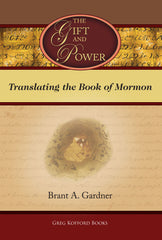
2011 Best Criticism Award, Association for Mormon Letters: The Gift and Power: Translating the Book of Mormon, by Brant Gardner. 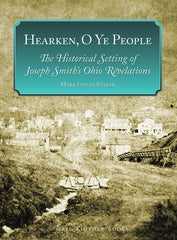
2011 Best Book Awards, Mormon History Association and John Whitmer Historical Association: Hearken O Ye People: The Historical Setting of Joseph Smith's Ohio Revelations, by Mark Staker. 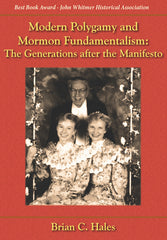
2007 Best Book Award, John Whitmer Historical Association: Modern Polygamy and Mormon Fundamentalism: The Generations after the Manifesto, by Brian Hales. 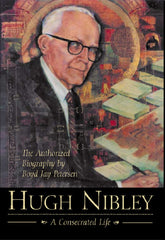
2003 Best Biography Award, Mormon History Association: Hugh Nibley: A Consecrated Life, by Boyd Petersen.
Kofford Authors at MHA June 01 2015
Greg Kofford Books authors have long been well-represented as speakers and panel chairs at annual conferences of the Mormon History Association, and the 2015 Conference at the Utah Valley Convention Center in Provo, Utah, June 4-7, is no exception! Check out the titles of their presentations and panels below:
Russell Stevenson, author of For the Cause of Righteousness: A Global History of Blacks and Mormonism, 1830-2013 will present, "We Aren't Africa: Mormonism in Nigeria, 1960-1964."
Joseph Spencer, author of For Zion: A Mormon Theology of Hope will present, "Canon and History: On the Revelation to Emma Smith."
Boyd Petersen, author of Hugh Nibley: A Consecrated Life and Dead Wood and Rushing Water: Essays on Mormon Faith, Culture, and Family will chair theTheology and History panel.
Claudia Bushman, co-editor (with Caroline Kline) ofMormon Women Have Their Say: Essays from the Claremont Oral History Collection will present "Early Decisions," as part of the Exponent II: Present at the Creation panel.
Lavina Fielding Anderson and Newell Bringhurst, editors of Excavating Mormon Pasts: The New Historiography of the Last Half Century will chair a panel and present a paper, respectively. Lavina will chair the Mormon History Journals Editors panel, and Newell will present "President David O. McKay's 1954 Encounter with the LDS Church's Black Priesthood Ban: An Important but Forgotten Episode."
Thomas Alexander, author of Mormonism in Transition: A History of the Latter-day Saints, 1890-1930, 3rd ed. will speak as part of the Culture of the Early Mormon History Association roundtable.
Todd Compton, author (with Leland H. Gentry) ofFire and Sword: A History of the Latter-Days Saints in Northern Missouri, 1836-39 will present "Ganado Mucho, Navajo Headman, and the Mormons."
Don Bradley, author of the forthcoming The Lost 116 Pages: Rediscovering the Book of Lehi will present, "From Cumorah's 'Ark' to Joseph's Hat: Sacred and Mundane Objects in the Emergence of the Book of Mormon."
Christine and Christopher Blythe, editors of the forthcoming Mormonisms: A Documentary History, 1844-1860 will chair panels and present papers. Christine will present, " 'Presiding at Birth:' The Creation of Folk Theologies among Latter-day Saint Women," and she will chair the Mormonism and Material Culture panel. Christopher will present, "Martyrdom Canes and Vernacular Mormonism" in that same panel.
Stuart Parker, author of the forthcoming History through Seer Stones: A Hundred Years of Mormon Pasts will present, "Margarita Bautista's 'Eternal Mexico:' A Revolutionary Mormon proto-Chicanismo."
Recent Reviews of Kofford Books Titles April 30 2015
Kofford titles continue to receive major accolades in the Mormon academic community. A few highlights from the past couple months:

For Zion: A Mormon Theology of Hope, by Joseph M. Spencer
- “It deserves to be read widely, and the message of consecration deserves discussion in Mormon sacrament meetings, Sunday schools, and General Conferences” —Association for Mormon Letters
- “Those interested in and familiar with Mormon theology will find this a refreshing read...Spencer’s book adds freshness and credibility to the literature, and his contribution to this topic is noteworthy.” —BYU Studies
- "What Spencer’s book drives home (and is all the reason for reading this remarkable book) is the invaluable insight that our hope in the future transformation of the world is made most evident in our loving answerability for its present circumstances." --BYU Professor of Humanities George Handley

- "I think this is now the primary scholarly treatment of the LDS race and priesthood history." — Times and Seasons
- "Stevenson should be commended writing the best resource for Latter-day Saints to learn more about the experience of Mormon blacks in settings both American and international...For the Cause of Righteousness is the best one-volume history of blacks and Mormonism available anywhere." — Juvenile Instructor: A Mormon History Blog
- “For the Cause of Righteousness” is an indispensable and long overdue volume — not only for its content, but also in the way it presents Mormon history. Stevenson’s book crucially shifts away from both the typical top-down leadership narrative, and the “outsider’s” perspective of Mormon racism. Exploring the priesthood ban in the framework of a global community better explains the interaction between blacks and Mormons. Significantly, this work illuminates the average Latter-day Saints’ role in shaping the faith—not as submissive sheep, but as movers and shakers." -- Association for Mormon Letters

- "Toward a Better Understanding" is warmly recommended for anyone who wants to learn more about Joseph’s plural marriages but particularly to those just venturing into its sometimes choppy waters. Were I not vulnerable to the sin of envy, I’d wish I had written it." -- Gregory L. Smith, Interpreter: A Journal of Mormon Scripture
- "I enjoyed this book and found it very helpful...The book allowed me to understand the relationships between events more clearly than I have before. I found the book to be faith-affirming and a further testimony of Joseph Smith’s life as a prophet of God. I would recommend it for those struggling with the topic as well as those who want to know more so they can be prepared for questions from others." --Suzanne Long Foster, Interpreter: A Journal of Mormon Scripture
- "Joseph Smith’s Polygamy: Toward a Better Understanding is an excellent and essential volume that will not only answer questions and offer solace to “truth seekers [who] may encounter details that are uncomfortable when studying early polygamy” but will also be a useful and interesting volume for those who have spent years studying the subject. I wholeheartedly recommend this book to all." --Craig L. Foster, Interpreter: A Journal of Mormon Scripture

Re-Reading Job: Understanding the Ancient World's Greatest Poem, by Michael Austin
Michael Austin received the 2014 Award for Best Religious Nonfiction from the Association for Mormon Letters, for his book, Re-reading Job: Understanding the Ancient World's Greatest Poem. -- Association for Mormon Letters
Q&A with Joseph Smith's Polygamy authors Laura Hales and Brian Hales April 06 2015

Joseph Smith's Polygamy: Toward a Better Understanding
by Brian C. Hales and Laura H. Hales
223 pages
Paperback $19.95 (ISBN 978-1-58958-723-6)
Available April 14th in print and e-book
Q: The last few years we've been inundated with new information concerning Mormon polygamy, from podcasts about polygamy, to the Church posting an essay on the subject, to Brian's 3 volume set on the history and theology of polygamy in early Mormonism. How does Joseph Smith's Polygamy: Toward a Better Understanding fit into that landscape and contribute to this ongoing conversation?
Laura: The Gospel Topics essay on early polygamy gave as good of a basic introduction to the subject as it could in ten pages. Brian’s book was 1500 pages. This book expands on the information in the essay by using the research used to write the trilogy. The first third of the book provides a theological framework for the unfolding of Nauvoo plural marriage; the second third provides the history; and the third contains short biographies of 35 of Joseph’s possible plural wives who agreed to participate in this strange practice.
Brian: Even though this volume is short, no major topic has been avoided. All the controversies have been presented. This volume fills an important niche to help inquirers who want more information than that found in the LDS.org essay, but don’t have the time or interest to dive into 1500+ pages of my trilogy, which deals more with the various opinions regarding the controversies.
Q: Like most authors, you would probably like as many people as possible to read your book. Is there an intended audience for this volume?
Laura: Absolutely. This book differs from the first three volumes in the series in that it was written specifically for Latter-day Saint members curious about Joseph Smith and his many plural wives, or who wonder about the meaning of Doctrine and Covenants 132. Whether the reader has a basic or a more comprehensive knowledge of the topic, they will benefit from the information in this volume.
Q: What do you hope they get from it?
Laura: Our hope is that readers will gain some reassurance. Often in the past, aspects of the practice have been exploited or sensationalized by authors less concerned about accuracy than promoting their opinion of Joseph Smith or for their distaste for the practice of plural marriage.
There may be things that are surprising and possibly discomforting about what occurred during the time period, but when contextualized, they are easier to understand. The early polygamists were just as skeptical as us about the restoration of the practice. Their actions (including the behaviors of Joseph and Emma) are better understood when historical and theological information is provided.
We would also hope that readers will gain just a little bit of sympathy for Joseph Smith as they learn of the difficult choices he had to make. Perhaps readers will also feel admiration for the plural wives whose faith, courage, and tenacity enabled them to have the bravery to embrace this commandment.
Q: Books about controversial subjects invite all kinds of commentary and criticism. As you have thought about what you would like reviewers to write about the book, what would top your wish list?
Laura: We did our best to present the story in the words of the participants without overly opining on motivations for behaviors, leaving the reader to ponder the evidence. At times, we probably could have provided more context, but we really wanted the reader to be able to look at the scant evidence and realize that much that has been previously published has included a fair amount of guess work. There is so much that we simply do not know. Hopefully we have conveyed the nebulous nature of the historical record, so the reader will be wary of any author that proclaims to know for surety what happened in any given situation.
If readers and reviewers could leave the book with an open mind, pondering what they have read, and searching on their own to answer their questions through further research, then I would be pleased. I have done this myself, studying the history of these people, how they interacted socially, and why Joseph would choose to be sealed to certain women. Some of my questions have been answered, but it takes time, patience, and study on the part of the seeker. Having reviewers laud us for leaving the door open instead of evaluating the merits of the book on their preconceived notions of what occurred, would be great.
Brian: Because polygamy involves sex and religion, it is immensely controversial. It appears that the greatest factor in determining a person’s reaction to plural marriage (or a book about it) involves their a priori beliefs. Because of the ambiguities and contradictions in the historical record, multiple interpretations can be advanced. Unbelievers seem to disagree with any explanation that does not depict Joseph as an adulterer motivated by libido. Believers, on the other hand, may join with us in seeing that while questions exist, there is no credible evidence Joseph was involved in sexual immorality and much documentation to support he was sincere and felt compelled by God to establish the practice.
This book is not an attempt to increase testimony, but instead to tell the story as accurately as we can, believing that historical truth will support belief better than any alternative. Accordingly, the best we may be able to hope for is for reviewers to conclude that we have presented the evidences with clarity and in a balanced way allowing individuals to understand our interpretations, even if they do not agree with them.
Q: Laura, tell us a little about your own journey in co-authoring this volume with Brian. Where were you at personally about the subject matter when you began the project, and where did you end up?
Laura: My journey began before I married Brian. I attended an author-meets-critic session at the Sunstone Symposium where Brian’s trilogy was being critiqued. I hadn’t read the book, so I had no idea if the criticisms were valid. So I read the books over the next six weeks, expecting not to learn much new about early polygamy. After I finished the last page of the book, I found myself asking what had happened to the Joseph Smith I knew.
After thinking, writing, and studying about Joseph Smith and his practice of polygamy for the last eighteen months, I think I have found him again. He isn’t the sanitized prophet that I grew up with, but he is much more real to me. Over time I have been able to feel sympathy for him, which was elusive for me for a long time. The Joseph I know now is so much more multi-dimensional, and I feel like I have been able to get a small glimpse into his character from those who knew him. Hopefully over the years that view will broaden with even more study because I still have unanswered questions.
Q: What were the most enjoyable and least enjoyable aspects of writing Joseph Smith's Polygamy?
Laura: The most enjoyable part of writing a book with a co-author is the synergy that happens—working together on an idea, completing each other’s sentences, and suggesting that elusive word to express a common thought. The least enjoyable aspect of writing this book were the spirited conversations that occurred when we disagreed on how to present a specific concept. I had to keep reminding Brian that he had already written “that book” and this one was for a different purpose and audience. I’m sure this was frustrating for him as well because this it is the first time he has collaborated on a writing project.
Pre-order your copy here.
Boyd Jay Petersen, Inaugural Speaker at 2014 John A. Widtsoe Lecture Series January 09 2014
His lecture, “Mormonism's All Seeing I: The Personal Essay and the Search for Truth,” invokes the legacy of Mormonism's great essayist Eugene England, exploring not just the balance between faith and the critical demands of rigorous scholarship but on the kinds of selves we uncover and create through self-narration and the cultivation of narrative voice. Boyd's writing takes up the legacy of Gene England's project—in its vulnerability and honesty, its generosity and warmth, and in its internal tensions.
The lecture is free and open to the public, and light refreshments will be available.
- Previous
- Page 2 of 2











